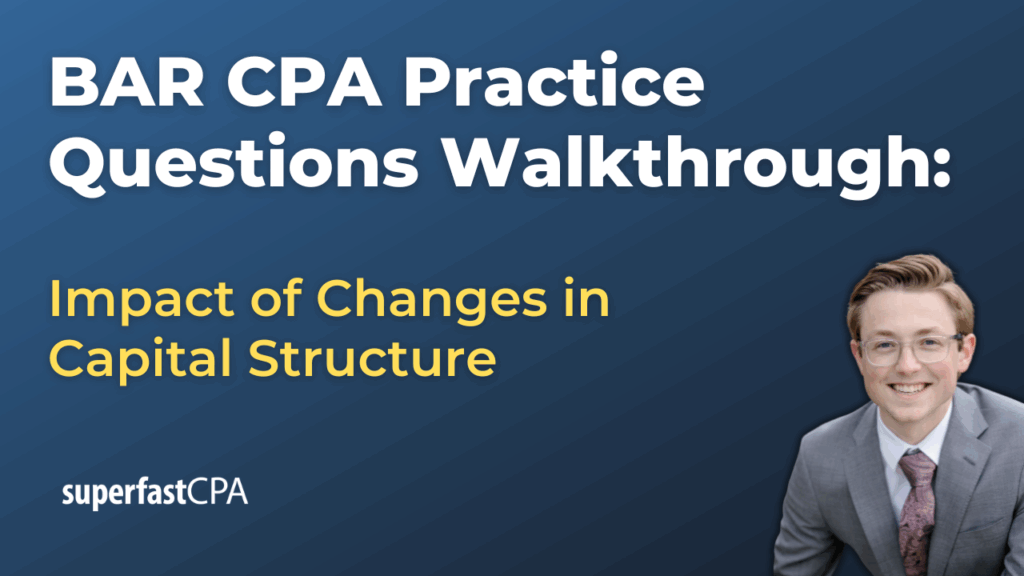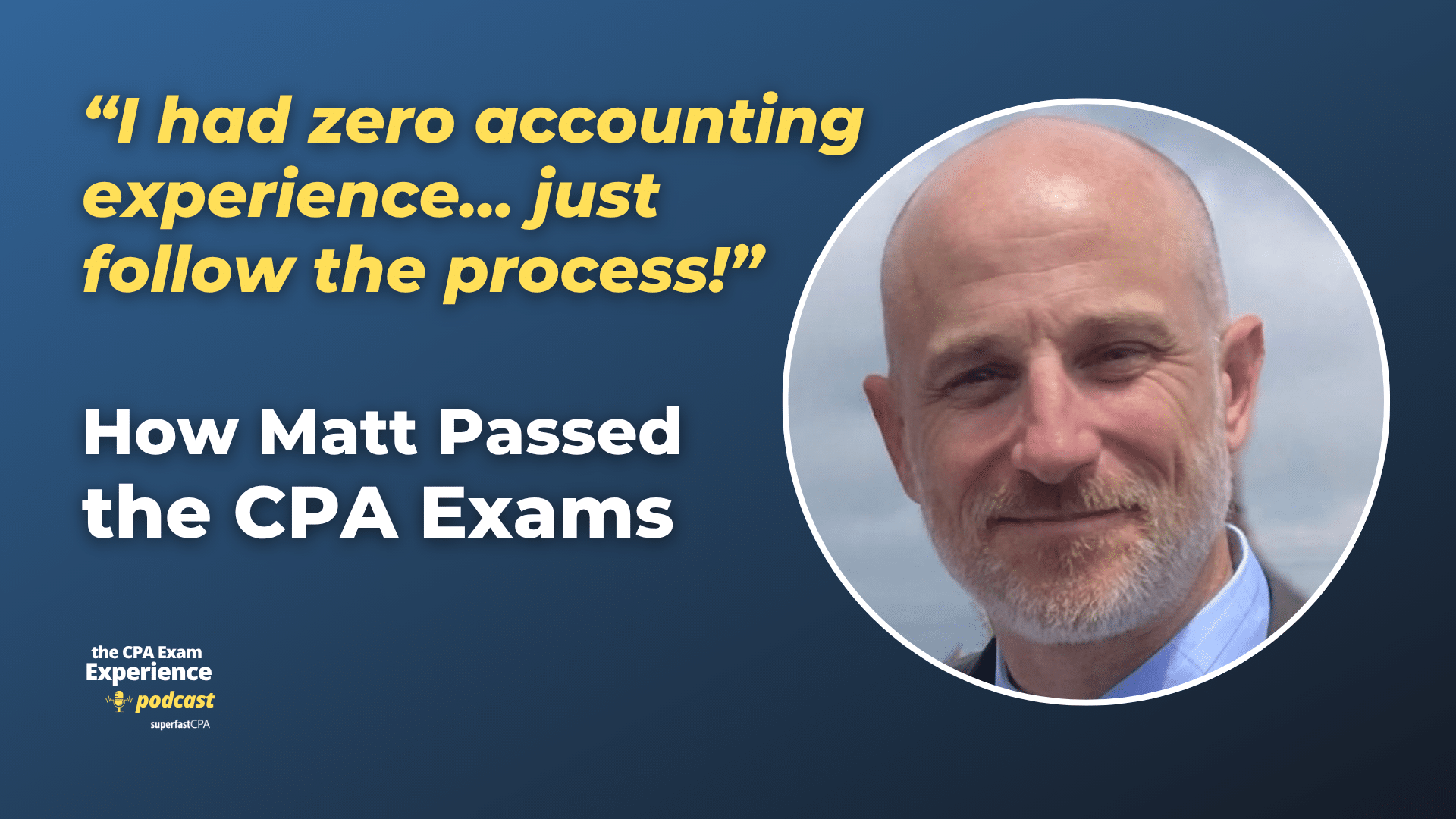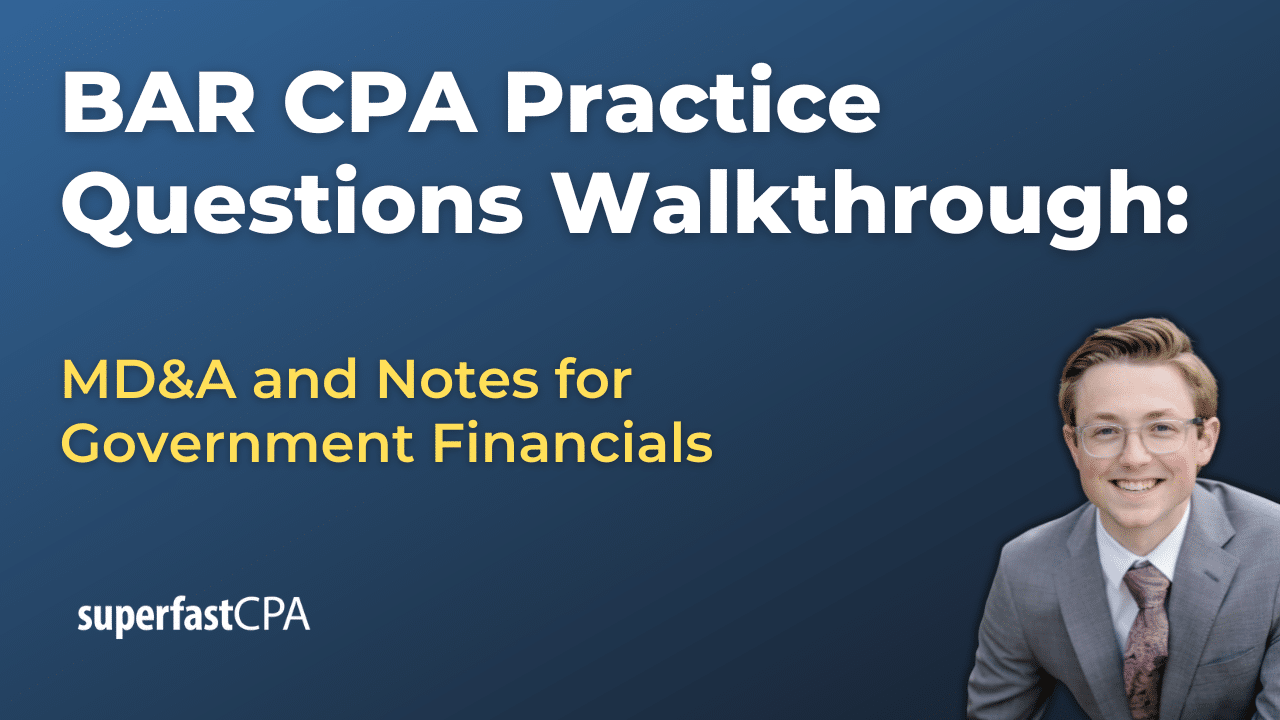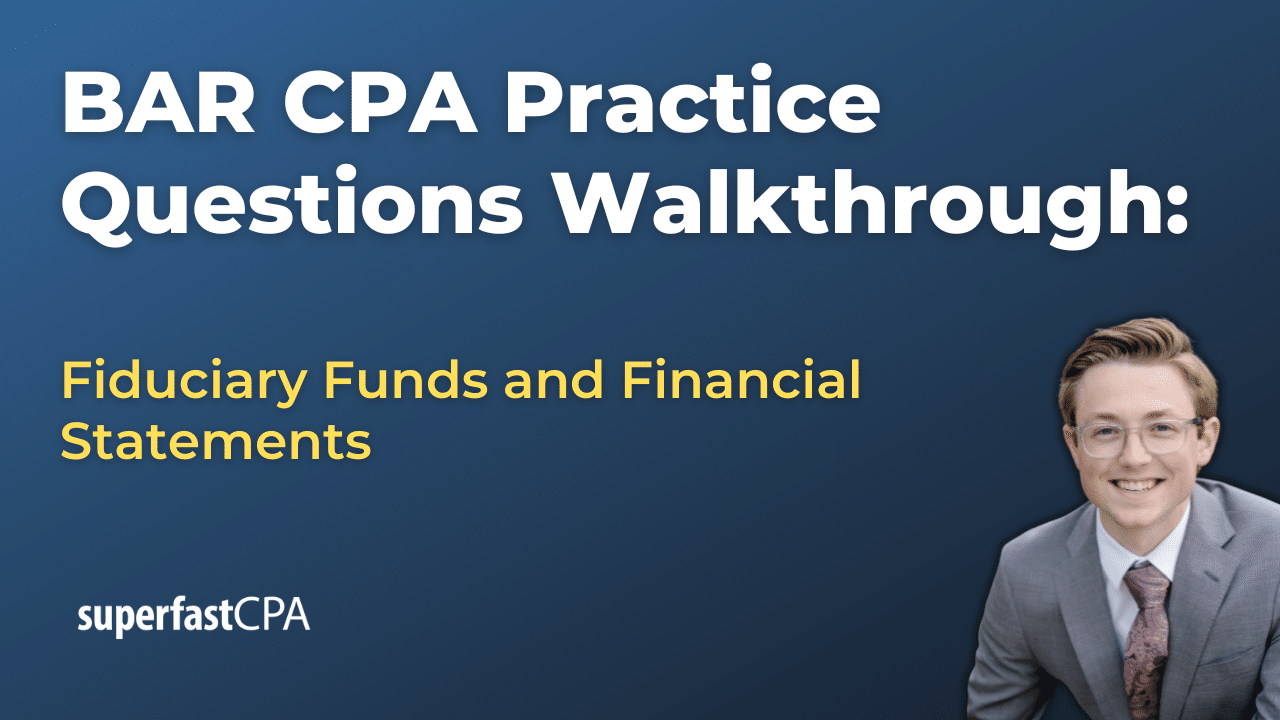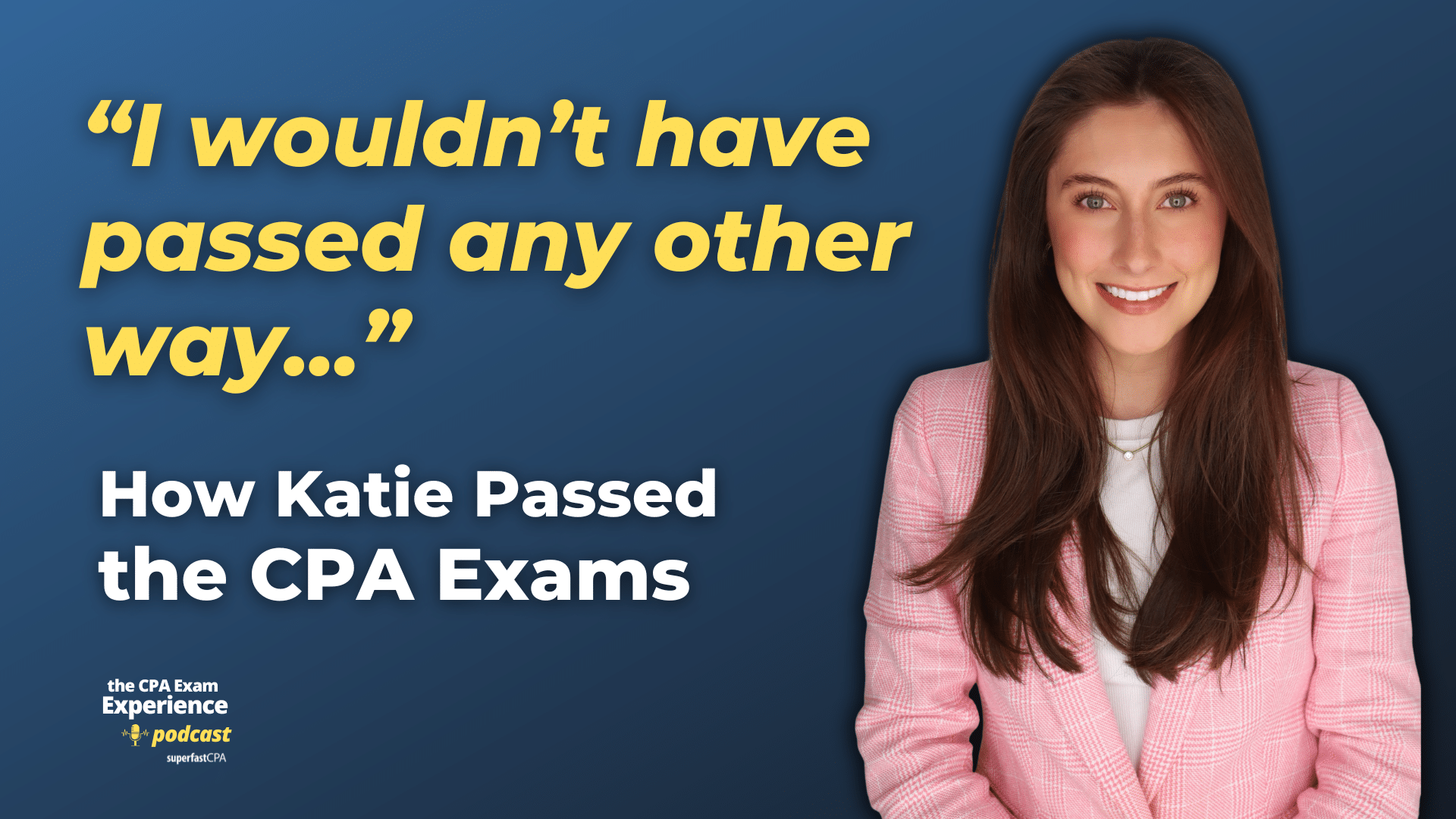In this video, we walk through 5 BAR practice questions teaching about impact of changes in capital structure. These questions are from BAR content area 1 on the AICPA CPA exam blueprints: Business Analysis
The best way to use this video is to pause each time we get to a new question in the video, and then make your own attempt at the question before watching us go through it.
Also be sure to watch one of our free webinars on the 6 “key ingredients” to an extremely effective & efficient CPA study process here…
Impact of Changes in Capital Structure
Capital structure decisions—how a company chooses to balance debt and equity—have wide-ranging effects across several financial areas, including cost of capital, leverage, liquidity, and compliance with loan covenants. Even relatively small changes in funding sources can shift a company’s risk profile and affect its access to financing. This article breaks down the key concepts, using practical examples to highlight what happens when a company changes the mix of debt and equity on its balance sheet.
Adding More Debt Increases Financial Leverage
When a company raises new debt without increasing equity, it becomes more financially leveraged. That means it’s relying more heavily on borrowed money to finance its operations and growth. The standard measure for this is the debt-to-equity ratio, calculated as total debt divided by total equity.
For example, suppose Grove Manufacturing has $200,000 in debt and $300,000 in equity, giving it a debt-to-equity ratio of 0.67. If it issues $150,000 in new long-term debt with no change in equity, its new ratio becomes 350,000 ÷ 300,000 = 1.17. This means Grove now has more debt than equity, increasing the financial risk of the business. While this can amplify returns in good times, it also magnifies losses in downturns due to higher fixed interest obligations.
Takeaway: If debt increases more than equity, leverage goes up, raising both risk and potential reward.
The Tax Shield on Debt Influences the Cost of Capital
One of the benefits of using debt is that interest payments are tax-deductible, reducing the after-tax cost of debt and, by extension, the weighted average cost of capital (WACC). When corporate tax rates rise, the tax benefit from interest payments becomes more valuable, reducing WACC. When tax rates fall, the benefit shrinks.
Consider a company with a 50/50 capital structure and pre-tax cost of debt at 6%. At a 20% tax rate, the after-tax cost of debt is 6% × (1 – 0.20) = 4.8%, and WACC might be 7.4%. If the tax rate increases to 35%, the after-tax cost drops to 3.9%, lowering WACC to 6.95%.
Takeaway: A higher tax rate reduces WACC by increasing the tax shield; a lower rate reduces the tax benefit and raises WACC.
More Leverage Can Increase Borrowing Costs
Although debt is cheaper than equity in many cases, increasing leverage too much can make borrowing more expensive. This is because lenders demand higher compensation (interest rate spreads) to offset the additional risk of default. These risk premiums are often quoted in basis points—where 1 basis point = 0.01%.
For example, Leland Co. increased its debt-to-equity ratio from 0.6 to 1.2. Before the change, it paid 150 basis points (1.50%) over the 10-year Treasury rate of 4.00%, resulting in a pre-tax cost of 5.50% and an after-tax cost of 3.85%. After increasing leverage, lenders required a 250 basis point spread, raising the pre-tax cost to 6.50% and the after-tax cost to 4.55%. Despite the tax shield, Leland now pays more net interest.
Takeaway: As leverage rises, lenders may increase spreads, raising the cost of debt and potentially the overall cost of capital.
Proportional Increases in Debt and Equity Still Affect Leverage
Even if a company raises both debt and equity at the same time, the balance between the two matters. If debt increases more than equity, the company still becomes more leveraged.
Suppose Riverside Inc. has a debt-to-equity ratio of 0.5, with $333,333 in debt and $666,667 in equity. If the company raises $200,000 in new debt and $100,000 in new equity, the debt-to-equity ratio becomes 533,333 ÷ 766,667 = 0.70. That’s a 0.20 increase from the original ratio of 0.50. Even though both sources of capital grew, the heavier use of debt raised the company’s financial risk.
Takeaway: The effect on leverage depends on the relative change in debt vs. equity—not just the fact that both increased.
Changes in Capital Structure Can Disrupt Liquidity and Loan Covenants
When a company takes on short-term debt without adding liquid assets, its liquidity position weakens. One of the key measures here is the current ratio: current assets divided by current liabilities. Many lenders require borrowers to maintain a minimum current ratio as part of loan covenants.
In one example, Timberline Co. issued $500,000 in new short-term debt without increasing current assets. Its current ratio dropped from 1.8 to 1.2, violating its loan covenant that required a ratio of at least 1.5. This situation puts the company at risk of penalty fees, loan renegotiation, or accelerated repayment.
A similar risk exists with leverage-based covenants. Fargo Inc., which had a debt-to-equity ratio of 1.2 and a covenant limit of 1.5, issued $1,000,000 in long-term debt for expansion without issuing new equity. Its debt-to-equity ratio rose to 1.7, putting it in violation of its loan agreement—again creating financial and legal risk.
Takeaway: Capital structure changes that affect key financial ratios—like current or leverage ratios—can result in covenant violations, with real consequences.
Summary: Key Points to Remember
- Increasing debt without equity increases leverage and financial risk.
- Higher tax rates reduce WACC by enhancing the tax shield on debt.
- Excessive leverage can increase borrowing costs due to risk premiums.
- A company’s leverage depends on the relative change in debt vs. equity.
- Structural changes can weaken liquidity and trigger covenant breaches.
These lessons highlight how capital structure is more than a theoretical concept—it actively shapes the financial flexibility, risk profile, and borrowing power of a company. Understanding how each piece interacts allows decision-makers to anticipate the broader financial impact of every capital funding move.

